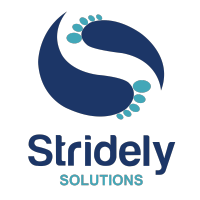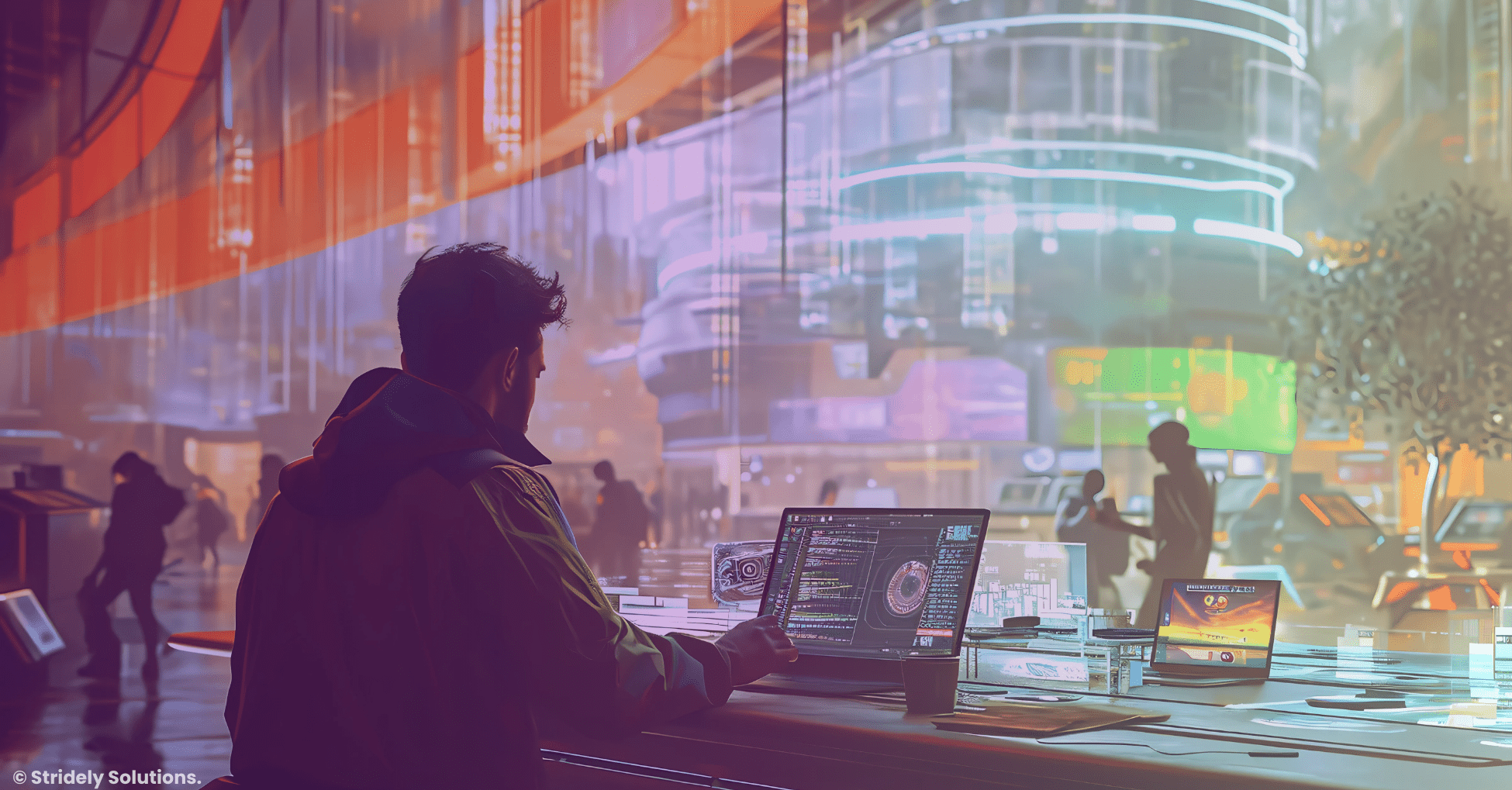With 2025 nearly upon us, the velocity of technological innovation continues to accelerate, reshaping the way enterprises operate and compete. Organizations worldwide are adopting futuristic tech in artificial intelligence, overhauling legacy systems, and preparing for transformative digital shifts. Emerging trends such as agentic AI, hyper-personalized customer experiences, and resilient infrastructures are rewriting the playbook for success.
In this blog, we dive into the top tech trends in 2025 that promise to redefine enterprise transformation. Navigate to a future defined by AI-driven decision-making, modernized operational technologies, and seamless customer engagement.
1. Agentic AI
As one of the top tech trends in 2025, Agentic AI is set to transform how organizations innovate by making artificial intelligence accessible to a broader range of users.
What is Agentic AI?
Agentic AI refers to the evolution of AI tools designed for non-technical users, enabling them to implement and utilize AI solutions without requiring extensive expertise. Tools such as Microsoft Copilot Studio, OpenAI’s GPTs, and Amazon Q exemplify this trend by offering low-code or no-code environments. With these platforms, employees across various departments—from marketing to HR—can create bots, automate processes, and analyze data, empowering them to drive innovation within their teams.
Opportunities for Businesses
Agentic AI enhances innovation by putting powerful tools into the hands of diverse teams. This trend allows organizations to:
- Personalize Engagement: Marketing teams can develop AI agents that tailor interactions to individual preferences, resulting in higher engagement and conversion rates.
- Improve Accessibility: AI agents can transform complex or unstructured content into accessible formats, enhancing knowledge management across the organization.
- Scale Effectively: Organizations can implement a hierarchical structure of AI agents, where advanced agents coordinate the activities of lower-level agents. This approach fosters efficient task delegation and streamlines decision-making, essential for driving innovation at scale.
The Future of Agentic AI
Looking ahead, agentic AI is poised to become a critical element in the landscape of digital transformation. Gartner predicts that by 2028, 15% of daily workplace decisions will be made autonomously by AI, highlighting the need for businesses to remain flexible and innovative in this fast-evolving environment. As organizations embrace these top tech trends in 2025, the focus will be on building robust AI systems that empower teams and drive sustained growth.
2. Digital Accessibility: Bridging the Digital Divide
Digital Accessibility is set to become increasingly vital in fostering inclusivity within the digital landscape. With a growing emphasis on equal access to technology, advancements in assistive technologies are expected to empower individuals with disabilities, enabling them to engage fully in the digital economy.
The Push for Inclusivity
Legislative initiatives like the European Accessibility Act (EAA) mandate that products and services be accessible to a wider audience, including those with permanent disabilities and older adults. By 2025, this act is expected to positively impact at least 87 million people across the EU, emphasizing the urgency of prioritizing digital accessibility.
As digital accessibility becomes a priority, organizations can no longer afford to delay its integration. The combination of AI with accessibility tools will enhance user experiences, making them more intuitive and inclusive. AI-powered features such as voice recognition, augmented reality, and real-time translation services are already enabling people with hearing or visual impairments to engage seamlessly with technology.
By embracing the top tech trends in 2025, businesses can position themselves as leaders in inclusivity while enhancing their overall user experience.
3. IoT
As we approach 2025, the Internet of Things (IoT) is emerging as a game-changing trend for organizations across various sectors.
Revolutionizing Supply Chain and Automation
By leveraging IoT technology, companies can enhance product identification and handling, leading to increased efficiency and sustainability. AI-driven IoT systems can monitor real-time data, enabling predictive maintenance and smarter decision-making processes. For example, factories equipped with IoT sensors can utilize AI to analyze equipment performance, thereby reducing downtime and improving overall productivity.
New technological developments
The number of connected IoT devices is estimated to surpass 40 billion by 2030, according to a “State of IoT Summer 2024” report by market researcher IoT Analytics. IoT is attracting many new technological developments including changes in computer architectures — partly driven by changes in storage and memory approaches — that will affect the way data is stored and processed in data centers and at the network edge, resulting in less data movement and lower-power data processing. Fundamental changes in computer processing could enable more IoT applications in the future. As businesses leverage IoT as top tech trends in 2025, they will not only streamline processes but also foster innovation and growth.
Read Success Story: SMART Water Quality System
4. Cloud Adoption and Modernizing Operational Technology (OT)
The convergence of operational technology (OT) and cloud solutions is revolutionizing how organizations manage critical infrastructure. Historically viewed as separate from traditional IT systems, OT is increasingly integrated with cloud technology, unlocking new avenues for innovation and operational efficiency.
The Shift Towards Cloud-Based OT Systems
OT systems, essential for sectors such as energy and manufacturing, have traditionally operated in isolated environments. However, the increasing demand for agility and data-driven decision-making is driving the modernization of these systems. For instance, in the utility sector, cloud-enabled solutions like distributed energy resource management systems (DERMS) are paving the way for enhanced grid management and operational insights.
Cloud adoption is one of the key top tech trends in 2025, offering several significant benefits:
- Enhanced Reliability and Resilience: Cloud solutions enable organizations to optimize grid operations and respond quickly to disruptions. This capability is crucial for maintaining service continuity, especially as energy demands fluctuate.
- Accelerated Integration of Renewable Energy: By leveraging cloud technology, utilities can efficiently incorporate distributed renewable energy sources, such as solar and wind, facilitating faster project completion and promoting sustainability.
- Scalability and Innovation: The cloud provides organizations with the tools to adopt emerging technologies like IoT and advanced analytics, fostering innovation and enabling faster development cycles.
Strategies for Effective Cloud Implementation
- Start with Low-Risk Applications: Focus on migrating non-essential OT applications initially, such as monitoring tools, to gain valuable insights and build trust in cloud technologies.
- Collaboration with Industry Experts: Engage with cloud providers and OT specialists to design systems that meet regulatory standards and align with operational goals.
The integration of OT and IT is one of the most emerging top tech trends of 2025. As more industries adopt cloud solutions, the line between OT and IT will continue to blur, offering opportunities for smarter and more efficient operations.
5. Hyper-Personalized and Invisible Customer Experiences
In 2025, customer expectations are evolving faster than ever, fueled by advanced technologies like agentic AI, natural language processing, and invisible intelligence. This evolution is leading to hyper-personalized interactions that fundamentally change how brands engage with their audiences, enabling seamless, proactive experiences that anticipate customer needs.
The Emergence of Invisible Intelligence
One of the top tech trends of 2025, invisible intelligence encompasses systems that operate in the background to deliver customized solutions without requiring direct user input. AI-driven applications can suggest products or services that align with a user’s lifestyle, transforming customer experiences by enhancing convenience and reducing friction.
Key Shifts in Customer Engagement
Several significant trends are reshaping how brands connect with consumers:
- Natural Language Interfaces: Voice assistants and chatbots are increasingly replacing traditional menus and forms, providing users with intuitive interactions that enhance engagement and streamline communication.
- Hyper-Personalization: By analyzing vast datasets, brands can deliver highly targeted marketing messages and product recommendations, creating experiences that feel uniquely tailored to each individual.
- Agentic AI Companions: AI-powered virtual assistants are evolving into empathetic companions capable of understanding and responding to complex emotions, fostering deeper customer loyalty and satisfaction.
Learn More: How Generative AI is Redefining the Construction Industry
The New Customer Contract
While customers are willing to share personal data for a more personalized experience, they expect transparency, value, and ethical practices in return. To meet these expectations, companies are:
- Investing in AI Infrastructure: Building robust data pipelines and utilizing AI to analyze customer insights effectively ensures brands can deliver personalized experiences at scale.
- Prioritizing User Experience (UX): A seamless and intuitive design is becoming essential for differentiating brands, ensuring customers feel understood and supported throughout their interactions.
- Fostering Trust Through Transparency: Clear communication regarding data usage helps brands establish and maintain strong customer relationships.
- Ethical AI: Organizations are aligning their AI practices with societal values, aiming to mitigate bias and protect customer privacy.
Navigating the future: Embracing trends to lead in a digital-first world
It’s a wrap!
The top tech trends of 2025 promise to be a dynamic period. From Agentic AI that drives smarter decision-making to accessibility tech that makes the digital world inclusive, these trends are set to shape the future of industries and society.
By investing in innovative solutions, companies can navigate the complexities of digital transformation while meeting ever-changing expectations. As we move forward, the companies that effectively harness these trends will set themselves apart, unlocking new opportunities for growth and success in an increasingly interconnected world.


